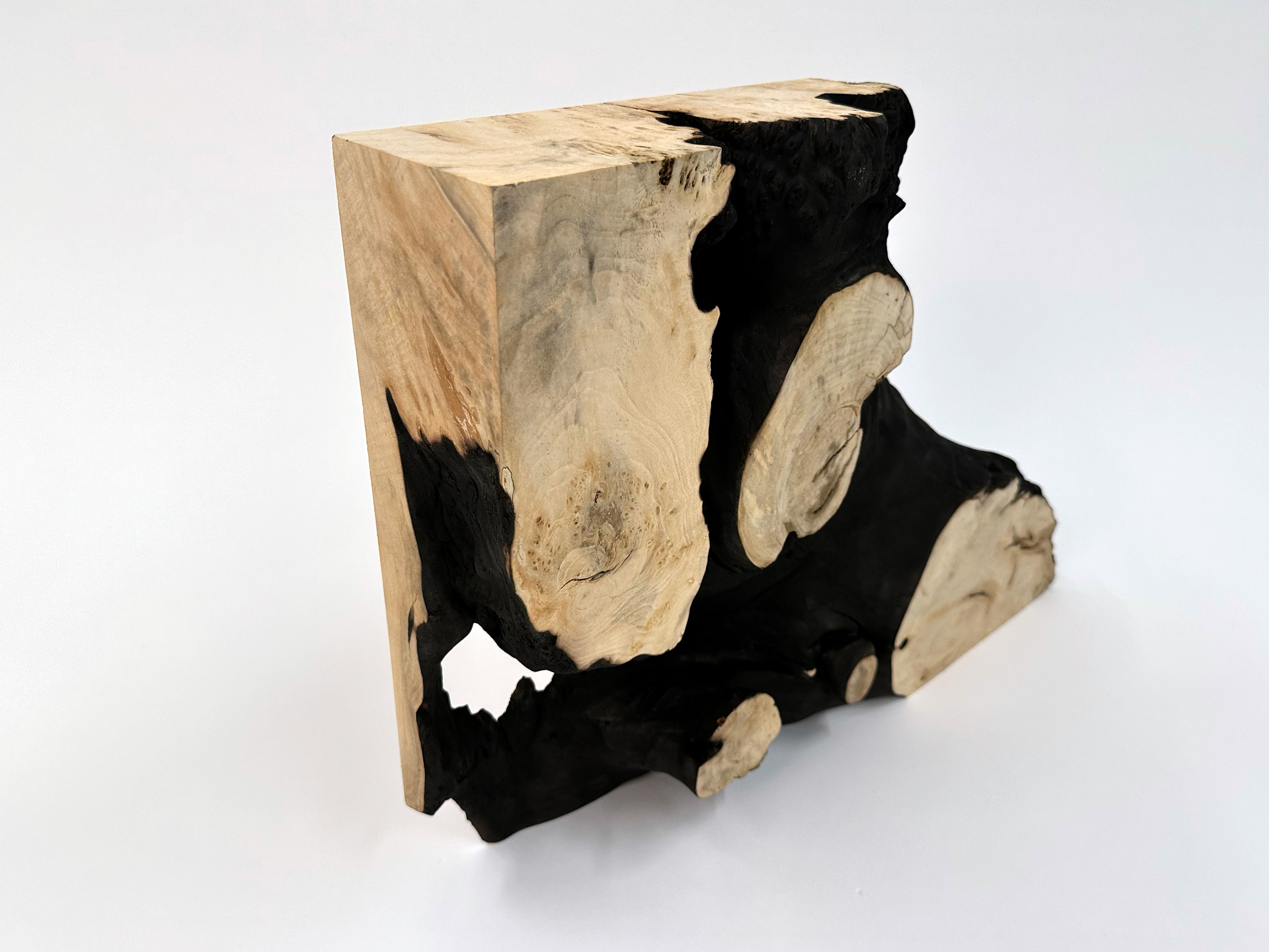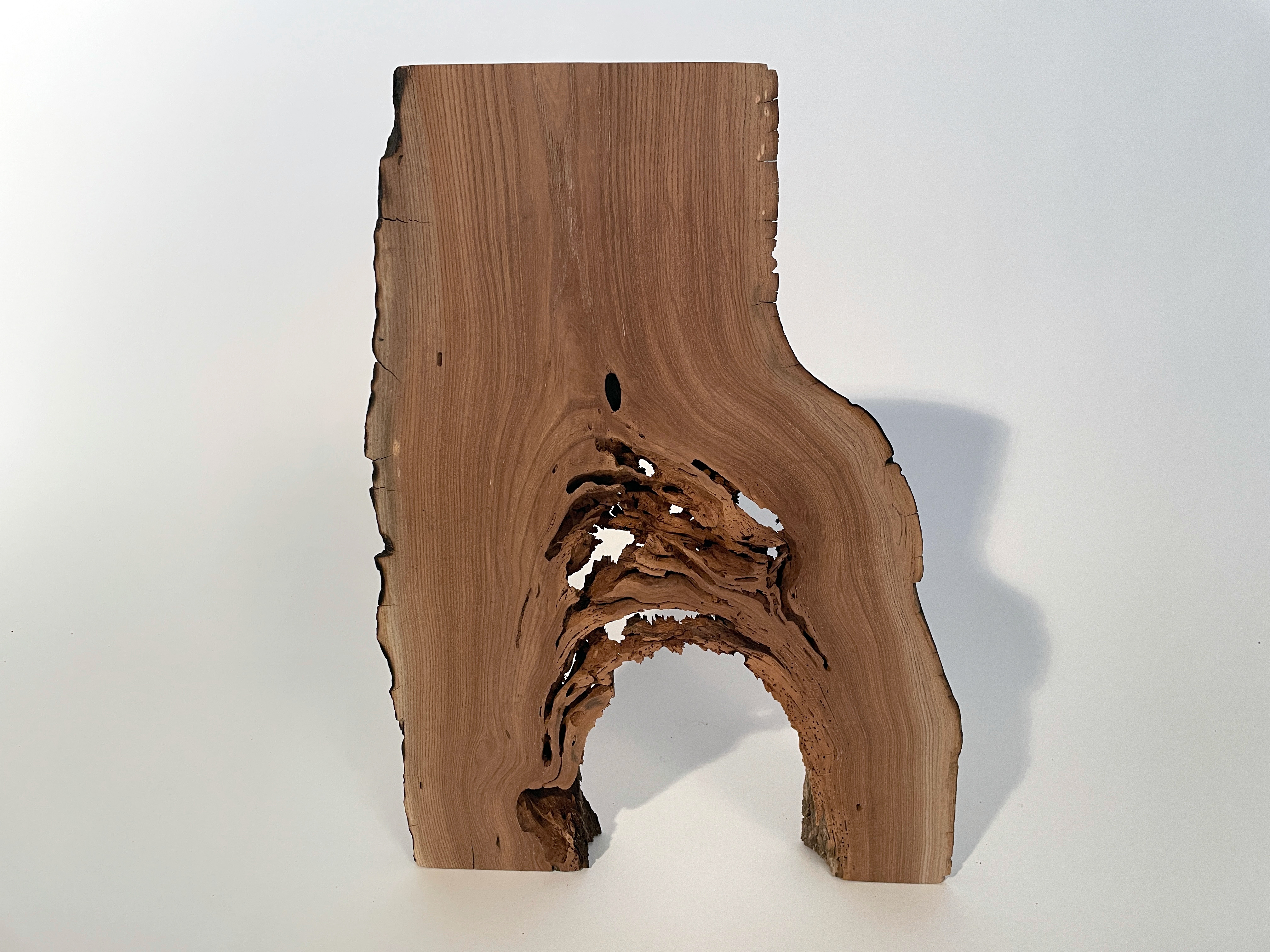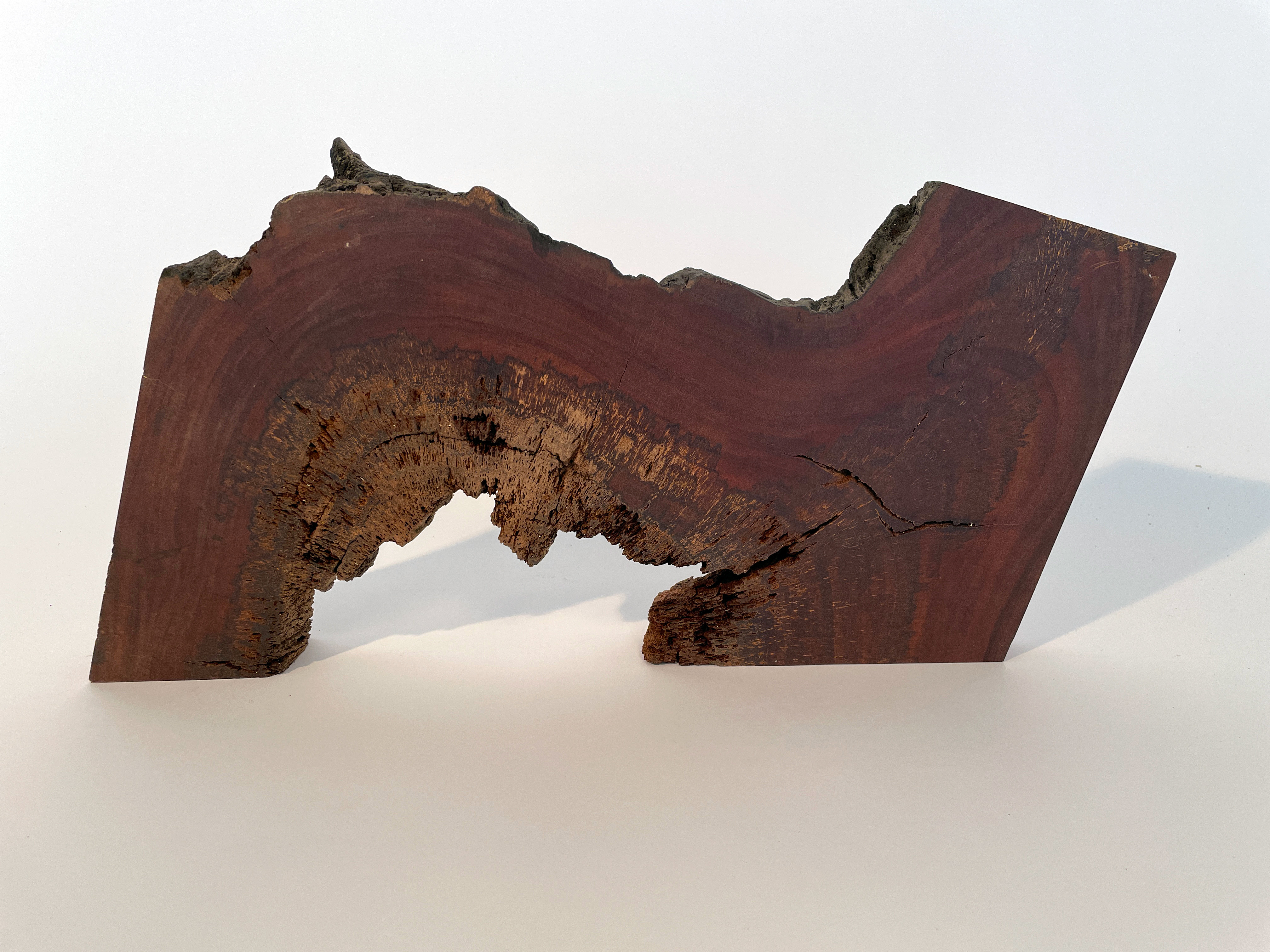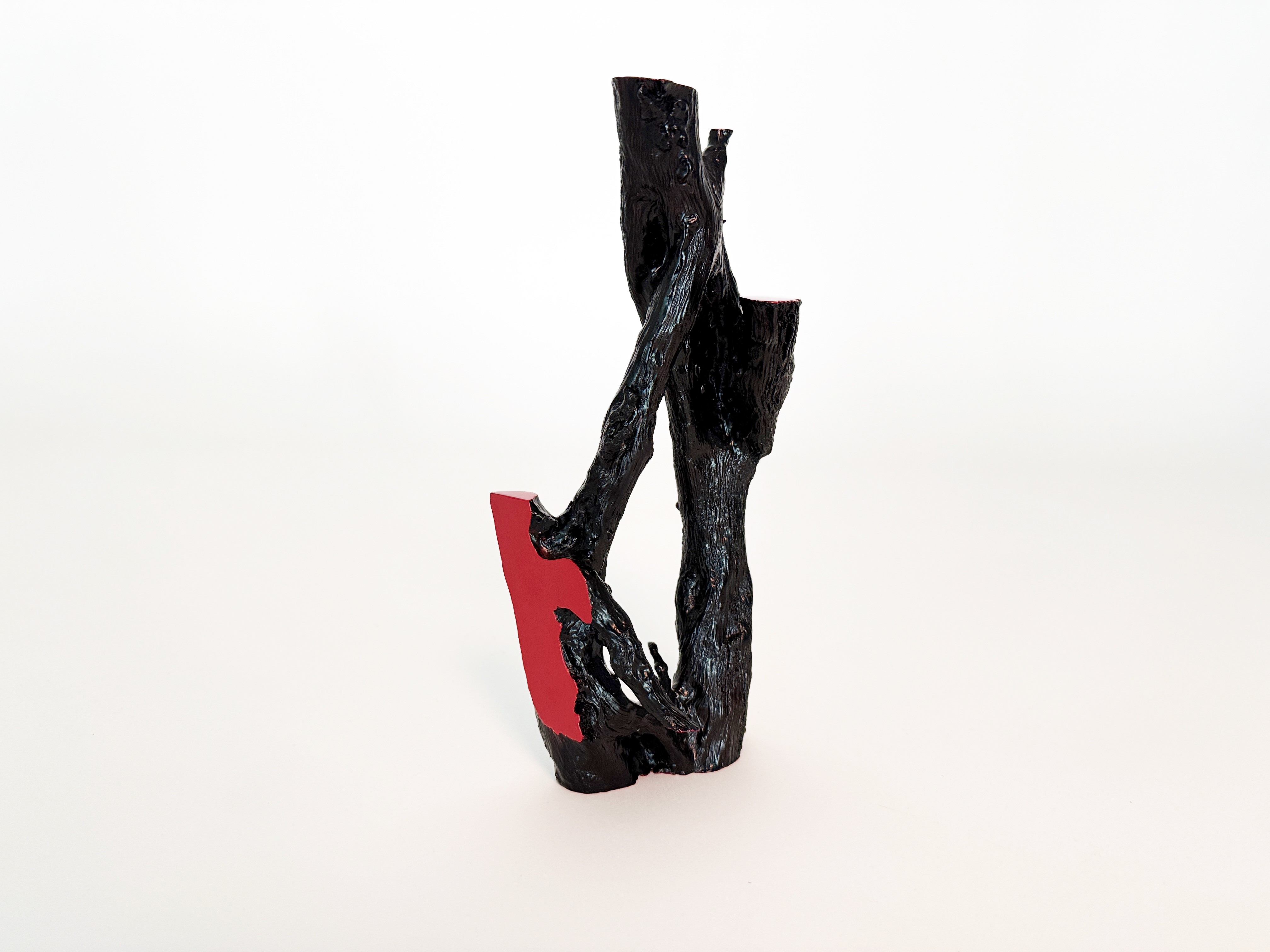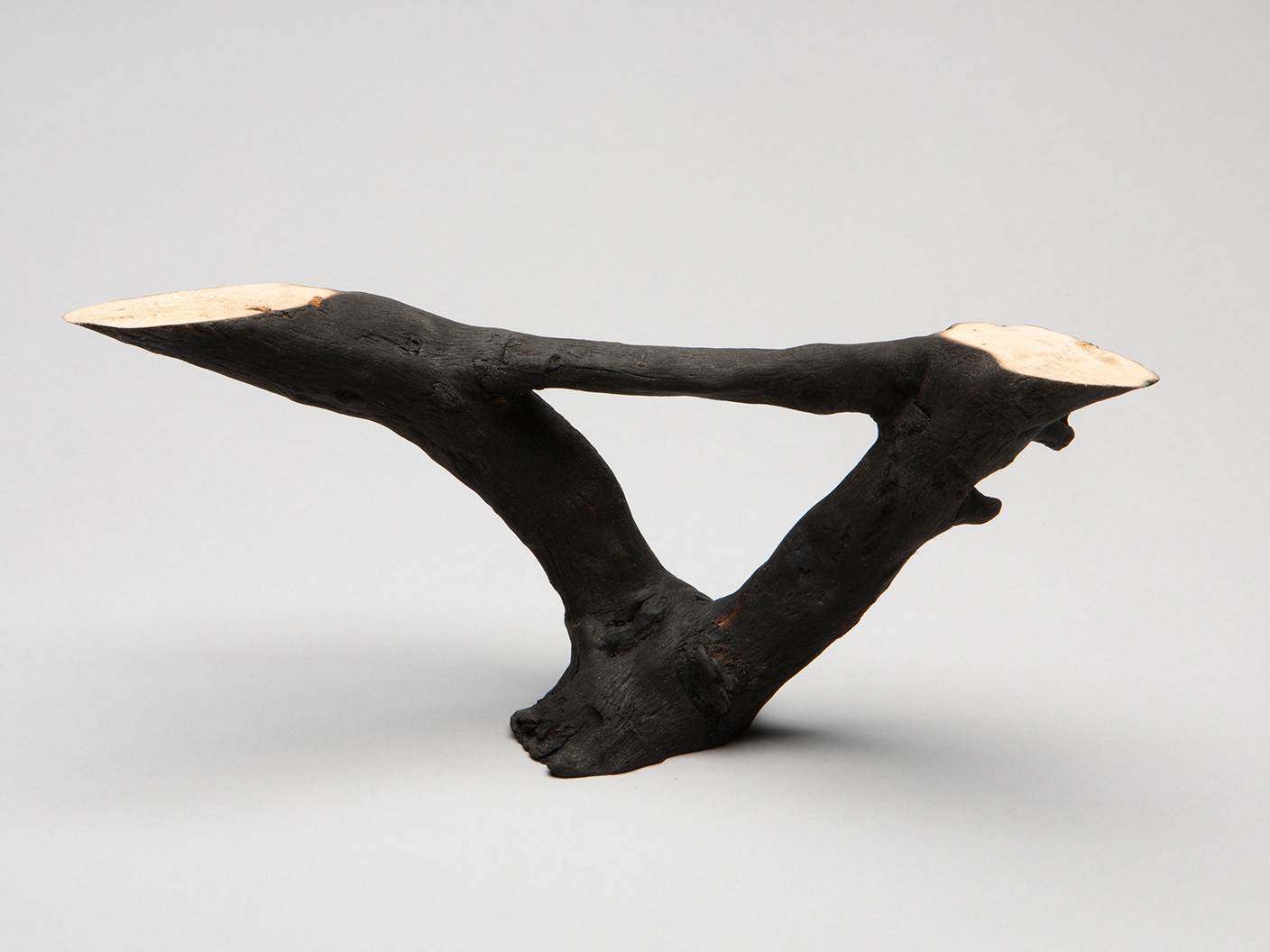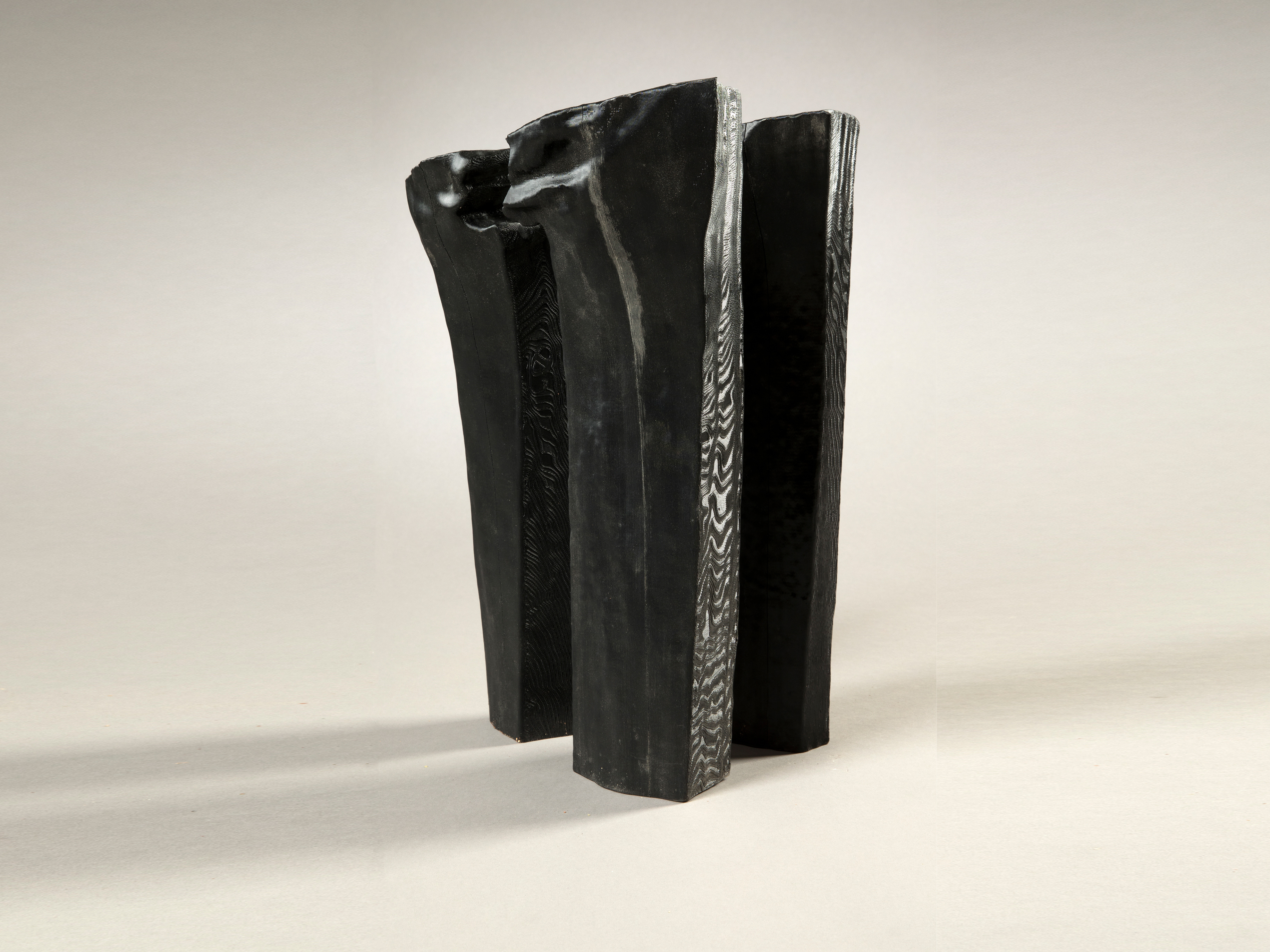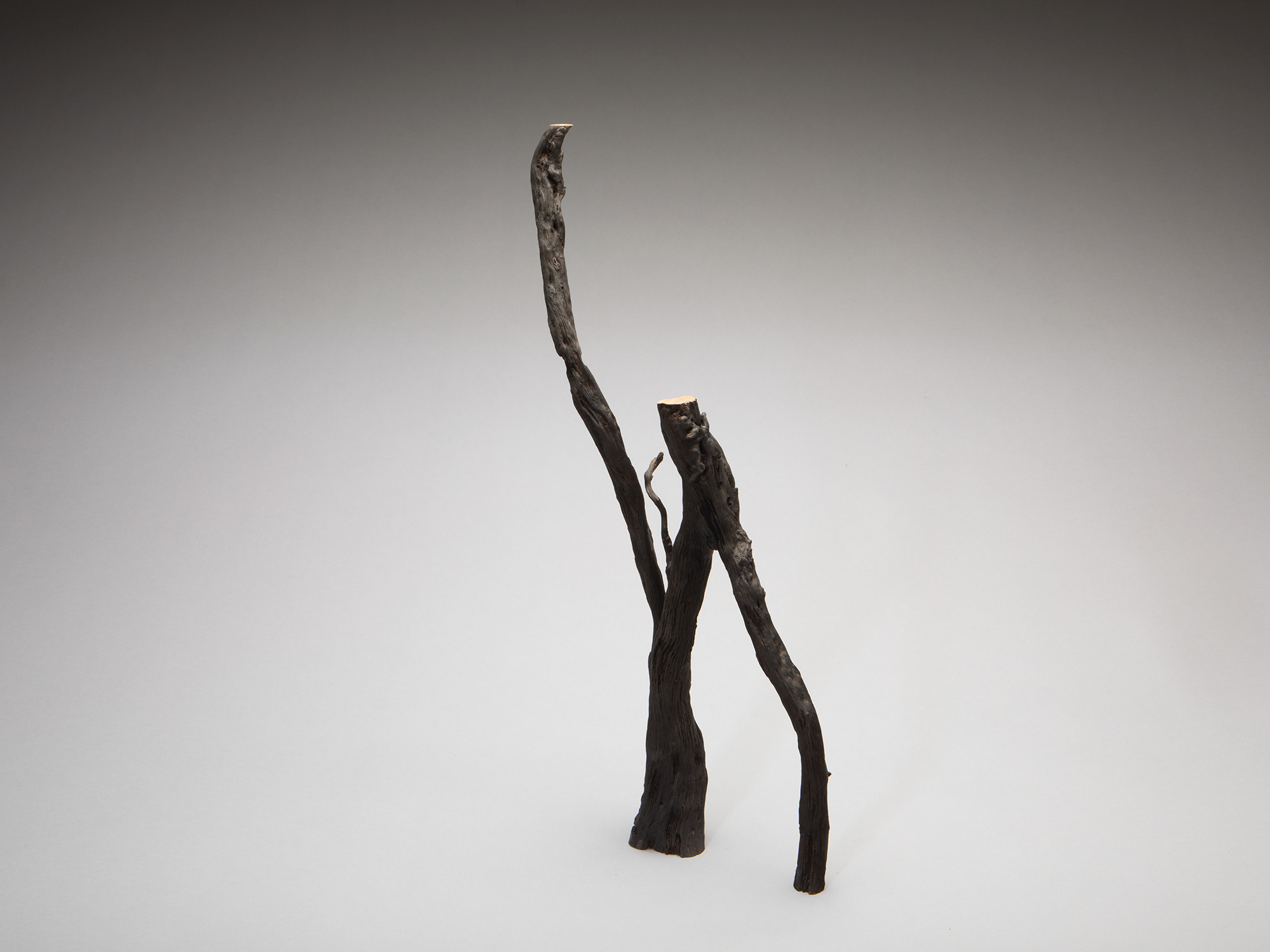This cedar of Lebanon was found on the grounds of Mausoleo Ossario Garibaldino in Rome, the site of Garilabdi's first battle for Italian independence. Its unusual number of leaders is the result of injury, perhaps from that of a cannonball, hence the form and name of the piece. This tree was 3D scanned during my residency at the American Academy in Rome.
This is the raw 3D scan produced with the camera. It includes raster information as well as point cloud data.
Rhino software was used to clean up the 3D file and to intersect the scan with a sphere to produce the desired form. This is the weakest link in the production chain, as this required a significant amount of technical support due to my inexperience with the software, something that the residency will allow me to overcome.
This is the 3D print made of PolyLactic Acid (PLA), a biodegradable thermoplastic derived from cornstarch, a renewable resource. Wax gatings and runners are fused onto the form to allow for the flow of molten metal and the release of any accumulated gasses. A cementitious shell is built up around the forms and is heated in a kiln to burn out the PLA creating a hollow form for pouring the cast iron.
After pouring the iron, the ceramic shell is broken off of the metal and the gating and vents are sawn off. Any remaining shell is carefully removed from the inner surfaces so as not to scratch them.
The outer spherical surfaces are ground smooth, leaving the inner casting raw. The overall size, shape, and material is that of a French cannonball of mid-19th century intersected with the form of the tree.
